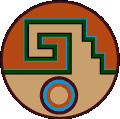Speaker
Description
As part of the Scientific Discovery through Advanced Computing (SciDAC) program, the Quantum Chromodynamics Nuclear Tomography (QuantOM) project aims to analyze data from Deep Inelastic Scattering (DIS) experiments conducted at Jefferson Lab and the upcoming Electron Ion Collider. The DIS data analysis is performed on an event-level by leveraging nuclear theory models and accounting for experimental conditions. In order to efficiently run multiple analyses under varying conditions, a composable workflow was designed where each section (theory, experiment, objective minimization, etc.) has its own dedicated module.The optimization, i.e. the fit of theory to experimental data is carried out by deep learning techniques, such as Generative Adversarial Networks (GANs) or Reinforcement Learning (RL).
This presentation highlights the details and novelties of this workflow, discusses present and future challenges, and highlights possible extensions to other projects with similar requirements.
Significance
This presentation discusses a framework that not only combines theoretical and experimental nuclear physics into one single workflow, but also leverages state of the art deep learning techniques.
| Experiment context, if any | Deep Inelastic Experiments conducted at Jefferson Lab and the furure EIC. |
|---|
